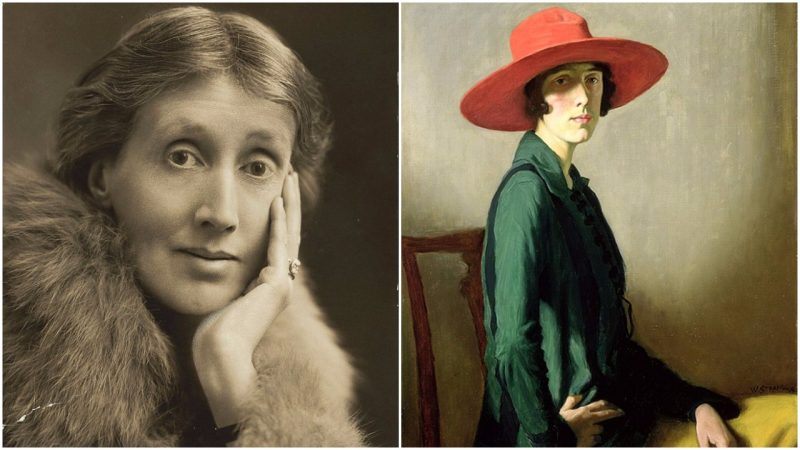“For it would seem—her case proved it— that we write, not with the fingers, but with the whole person. The nerve which controls the pen winds itself about every fibre of our being, threads the heart, pierces the liver.”
Orlando – Virginia Woolf
The world of literature would certainly not be the same if it weren’t for one of the most brilliant authors of the modernist era, Virginia Woolf. As an intellectual of high regard, Woolf challenged societal norms, opening up new dimensions of feminist thinking. She also had one very intricate relationship with a woman, who also happened to inspire one of her most groundbreaking novels, Orlando. Literature geeks may easily guess that that woman was the famous socialite and writer Vita Sackville-West.
The story of the romance between Woolf and Sackville-West is now headed to the big screen. Reportedly, actress Eva Green will be starring as Virginia Woolf and Gemma Arterton as Vita Sackville-West. Entitled Vita and Virginia, the film is to be based on a stage play under the same title, authored by Eileen Atkins.
In piecing together the play Vita and Virginia, Atkins sourced material from the letters that the two women exchanged. Presently she is working on the script for the film, alongside the film director, Chanya Button.
![Photograph of Virginia Woolf with hand on face wearing a fur stole. This particular photograph is simply described as “Woolf Virginia [1927]”](https://www.thevintagenews.com/wp-content/uploads/sites/65/2017/07/617px-virginia_woolf_1927-439x640.jpg)
Button has stated for Variety that “‘Vita & Virginia will be a visceral love story, a vivid exploration of creativity, and an energized perspective on one of our most iconic writers.”
A trademark of Virginia Woolf’s fictitious world is it is so emotionally packed; her books greatly push the boundaries of the novel as a genre. Her writing suits her life story well, in that it is at the same time tragic, vibrant, and moving.
The writer was born Virginia Stephen and from a very early age, she lost a great number of close family members to various maladies.
As she embarked on her career as a writer, Woolf would quickly grow in prominence in intellectual circles in Britain, as well as internationally. She was perhaps the most notable member of the Bloomsbury Group in London, a thriving salon that formed a hub for philosophers, writers, and artists in the first half of the 20th century.
Married to Leonard Woolf, together they bought a small, manually operating printing press, and by that, established a publishing house of their own, the Hogarth Press. The spouses enjoyed quite a remarkable lifetime of deep and caring connection through which Leonard Woolf consistently provided his wife with full support of her writing career, as well as her mental health.

Amid the story of their marriage, however, there was also Virginia Woolf’s romance with Vita Sackville-West. These two brilliant women had met in 1922 when Woolf was aged 40 and Sackville-West a decade younger. Sackville-West was married as well, to politician and diplomat Harold Nicolson, but nevertheless, she was well noted for having had a few extensive relationships with other women.
The relationship between Woolf and Sackville-West lasted only a decade, but they maintained their special connectedness until Woolf’s death in 1941. Although at the beginning they were friends, Woolf being more uncertain about a sexual relationship, they became intensely devoted to one another.

The film that is set to portray this relationship will reportedly focus the story on what happened with the two in 1927 and 1928, the time when Orlando: A Biography was published. Orlando is, without a doubt, one of Woolf’s most remarkable reads, a lyrical ode to its gender-shifting protagonist, whom Woolf had based on Sackville-West.
In the novel, Woolf not only relativizes the aspect of gender, but she also relativizes the concept of time. As the novel opens, readers can go through Orlando’s first encounters as a 16th-century male nobleman, only to find him later on venturing through the following centuries, and somewhere in the middle of the novel, waking up as a woman.
Orlando, Mrs. Dalloway, To the Lighthouse, and The Waves, as well as Woolf’s prominent nonfiction work such as A Room of One’s Own, are stunning examples of her talent. Sadly, after a lifetime of suffering from depression, the writer committed suicide at the age of 59.

Until now, portrayals of Woolf have nearly always emphasized her mental health, such as in the film starring Nicole Kidman, The Hours. Many times, such emphasis has been at the cost of other brilliant aspects of her life, such as in the case of how she maintained her relationship with Sackville-West.
Or, as in Atkins words from a 1991 interview for the Times, “People automatically think of suicides as desperate people, whereas actually, I think Virginia was very sound, very sensible, very illuminating.”
Bearing this in mind, we are intrigued by Vita and Woolf.
